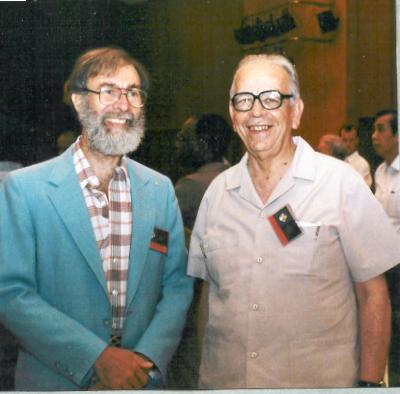Introduction and UNESCO's Mandate
Page 1
Yamousoukro and Seville Statement
Page 2
Origins and Executive Board Adoption
Pages 3 - 4
Launching the Programme: El Salvador and Roundtable
Pages 5 - 6 - 7
1993 General Conference
Page 8
National Projects
Pages 9 - 10
Programme Unit
Page 11
Toward a Global Scope
Pages 12 - 13
Transdisciplinary Project and Human Right to Peace
Pages 14 - 15 - 16
1997: A New Approach
Page 17
UN General Assembly Resolutions
Page 18
Resolution for International Year
Page 19
Declaration and Programme of Action
Pages 20 - 21
Resolution for International Decade
Pages 22 - 23
Training Programmes
Page 24
Global Movement
Pages 25 - 26
Publicity Campaign
Pages 27 - 28
Decentralized Network
Pages 29 - 30
Manifesto 2000
Page 31
Use of Internet
Pages 32 - 33
Future of the Culture of Peace
Pages 34 - 35 - 36 - 37 - 38
Because of its noble purpose, UNESCO has always attracted people from all over the world who shared these ideals. And it was at the preparatory meetings for a UNESCO conference that the phrase and definition of the culture of peace was brought by a Peruvian Jesuit scholar, Father Felipe MacGregor. MacGregor had headed the team that had previously published a delightfully illustrated book of peace education in Peru in 1986, named "Cultura de Paz", with careful descriptions and definitions of conflict, violence and peace (Click here for a copy of the book, which, as far as I know, is not otherwise available on the Internet). I was privileged to work with Father MacGregor at those meetings.

The culture of peace became the central theme of the resulting Conference, the International Congress on Peace in the Minds of Men, held in Yamoussoukro, Cote d'Ivoire, in July 1989. Its final declaration called for the "a new vision of peace by developing a peace culture based on the universal values of respect for life, liberty, justice, solidarity, tolerance, human rights and equality between women and men." The results of the Conference were then introduced into the documents of the UNESCO General Conference of November 1989: both the Declaration of Yamoussoukro with its culture of peace theme and the Seville Statement on Violence which provided a scientific underpinning that "the same species who invented war is capable of inventing peace." At this point the culture of peace was still little more than a slogan among many others at UNESCO.

left to right: Martin Ramirez, Paul Scott, Santiago Genoves, David Adams, Ben Ginsburg, Samir Ghosh, Robert Hinde, Jo Groebel, Ashis Nandy
The Seville Statement, which I had represented at Yamoussoukro, laid a foundation for the culture of peace by showing scientifically that war is based on cultural not biological factors. It was not by accident that its theme came from the noted anthropologist Margaret Mead or that the original idea for the Statement came from the anthropologist Santiago Genoves. While half of the scientists who drafted and signed the Statement were social scientists, the other half came from the biological sciences, including ethology, neurophysiology, animal behavior and genetics. They agreed that there is nothing yet known in biology that would make it impossible to abolish warfare. The brochure about the Seville Statement that I wrote for UNESCO in 1991 was subtitled "Preparing the ground for the constructing of peace."
 |
 |
 |